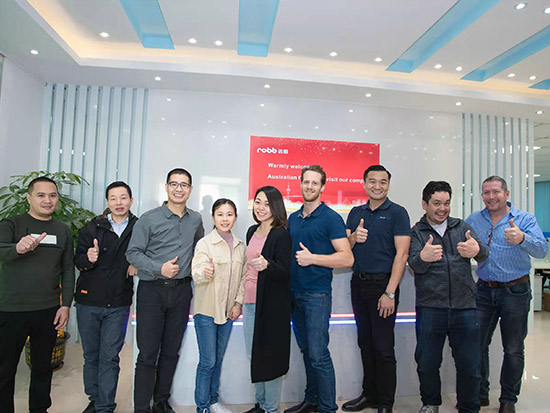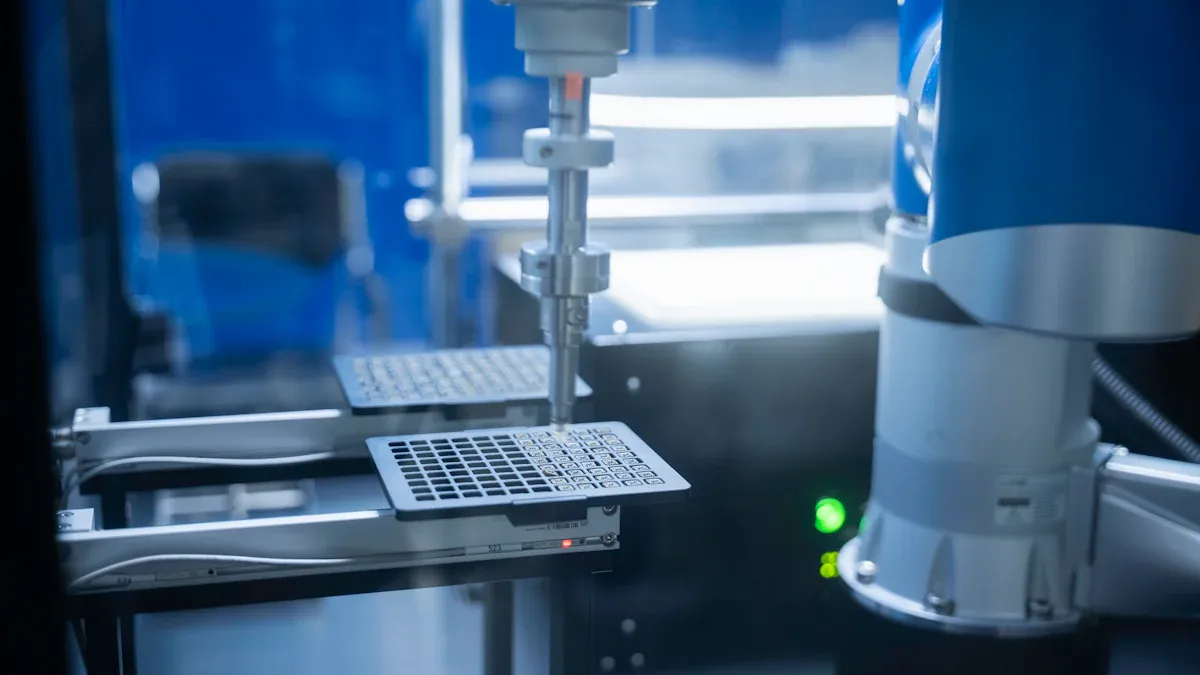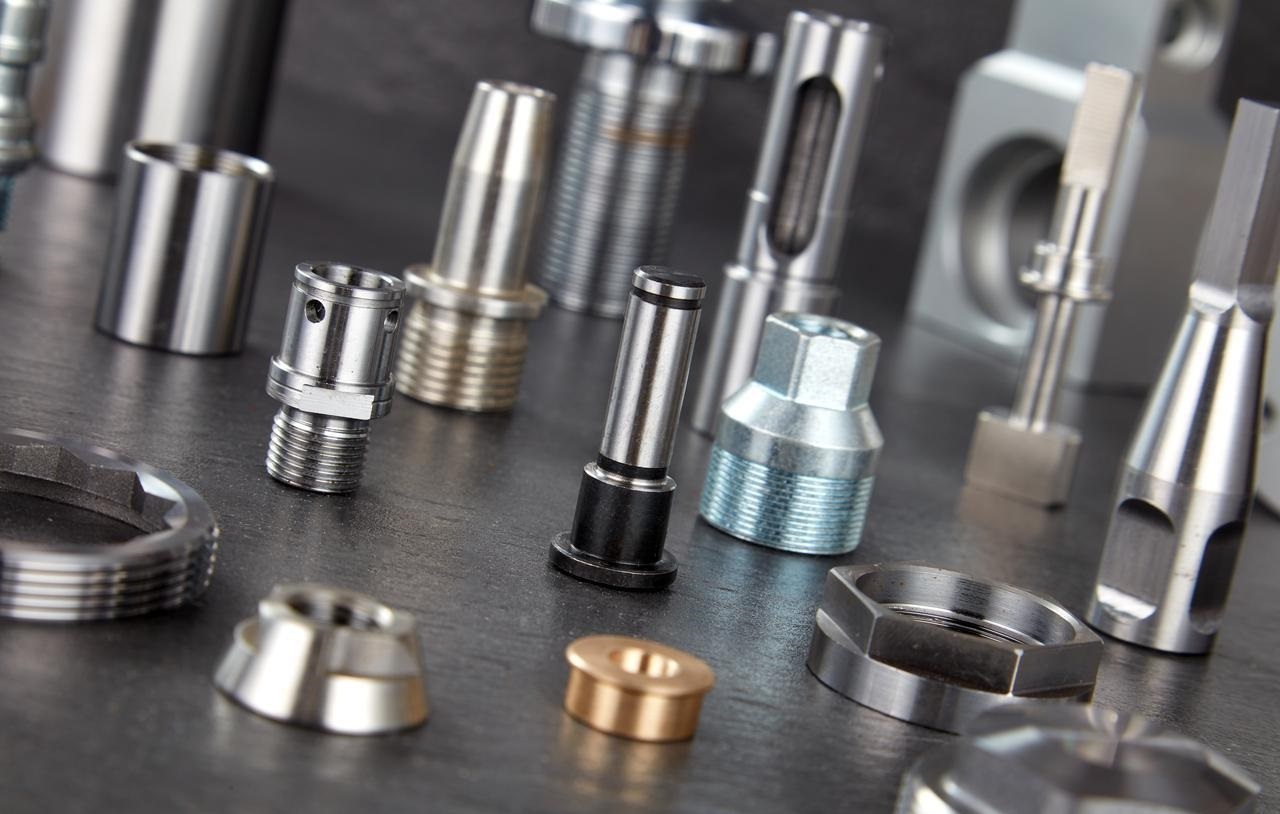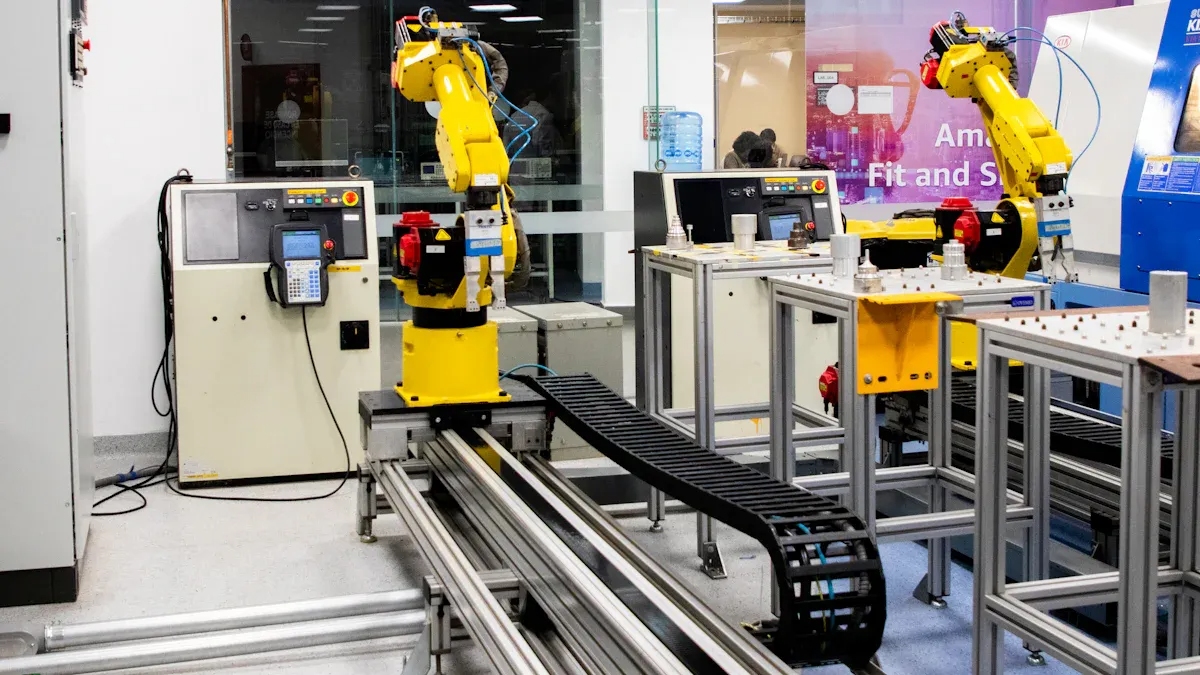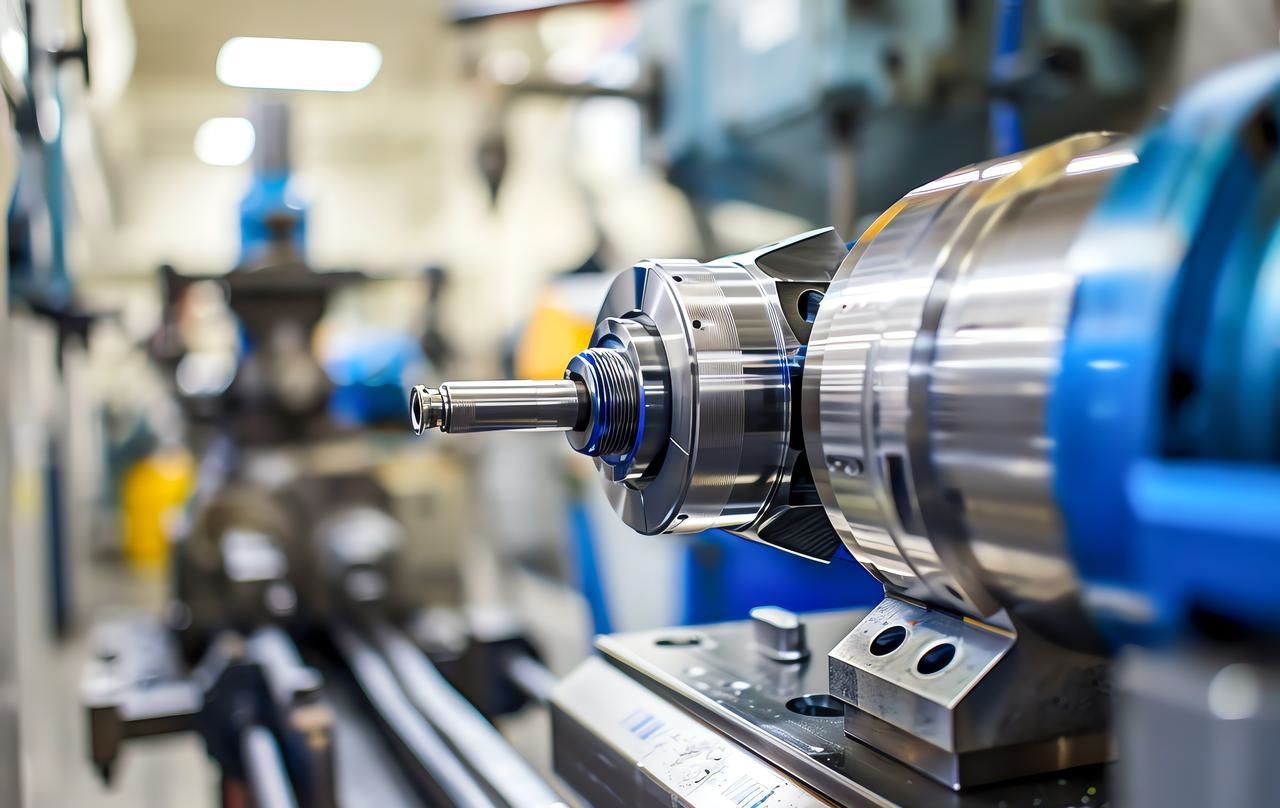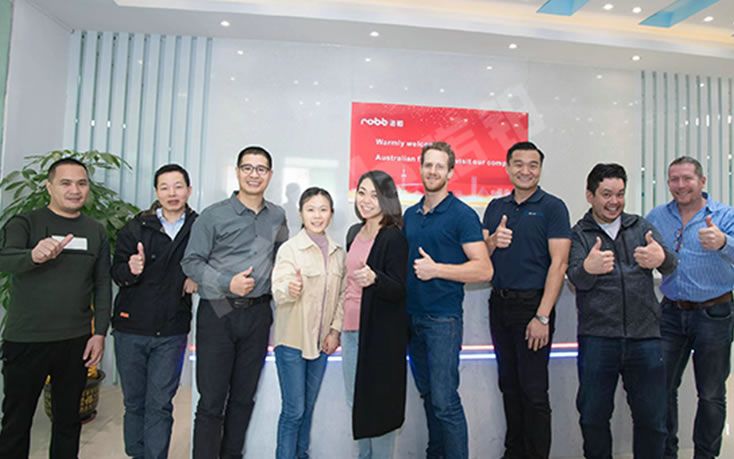Introduction: Why CNC-Machined Ceramics Matter
Defining Ceramic CNC Machining
Ceramic CNC machining is a cutting-edge process where computer-controlled tools, typically diamond-coated mills and grinders, craft ceramics with amazing precision on a CNC system. Unlike metals or plastics, ceramics need special care because they’re incredibly tough but also brittle. That’s why parts are first shaped roughly when soft, then sintered to boost hardness, and finally perfected with diamond tooling to achieve top-notch accuracy and flawless finishes.

Why It Powers Precision, Versatility & Manufacturing Evolution
Micron-Level Precision
Ceramic CNC machining hits crazy precise levels—down to about ±0.005 mm (that’s 5 microns!) even on tricky shapes. That kind of accuracy is a must-have in tight-tolerance fields like making semiconductors, aerospace parts, and medical tools.
Lots of Materials and Uses
We can machine all kinds of ceramics—like alumina, zirconia, silicon nitride, silicon carbide, Macor, and quartz—to make everything from biocompatible implants and brake pads to engine parts, semiconductor insulators, heat sinks, and even aerospace engine pieces.
How Manufacturing Has Changed
Before, ceramics mostly got shaped by molding or sintering, which meant simple shapes and expensive tooling. But now, CNC lets you machine ceramics after sintering, do quick prototypes, and make changes fast without spending big on molds. With the latest multi-axis CNC machines, real-time controls, and diamond tools, ceramic manufacturing has become faster, more precise, and more flexible than ever.
The Materials at Play: Beyond “Just Ceramic”
Key Ceramic Materials & Selection Criteria
- Alumina (Al₂O₃)
Hardness: ~1600–2000 HV; fracture toughness: ~3–4 MPa·m¹/²
It’s great because it resists wear well and handles electrical insulation up to 15–20 kV/mm. Plus, it’s easy to find and doesn’t cost much. But watch out—it’s brittle, so you’ll need diamond tools and be careful not to chip it when finishing.
- Zirconia (ZrO₂)
Hardness: ~1200–1500 HV; fracture toughness: ~9–10 MPa·m¹/²
Zirconia offers outstanding toughness, excellent wear resistance, superb biocompatibility—ideal for dental implants—and strong chemical resistance. Although it has low thermal conductivity and can degrade at low temperatures, its premium toughness makes it a valuable choice.
- Silicon Nitride (Si₃N₄/ SiAlON)
Hardness: ~1600–1800 HV; fracture toughness: ~6–7 MPa·m¹/²; bending strength: 1000–1500 Mpa
It’s great at handling thermal shocks, keeps strong at high temps, and wears well. Perfect for fast machining, up to about 1200 meters per minute. But it’s tough to grind, wears out tools fast, and is trickier to machine than zirconia or alumina.
- Silicon Carbide (SiC)
Hardness: ~2500–3000 HV; fracture toughness: ~3–5 MPa·m¹/²
It handles wear and heat like a champ and works great in really abrasive or hot situations. But it’s super brittle and really hard to machine, so it’s mostly used in ground or sintered form.
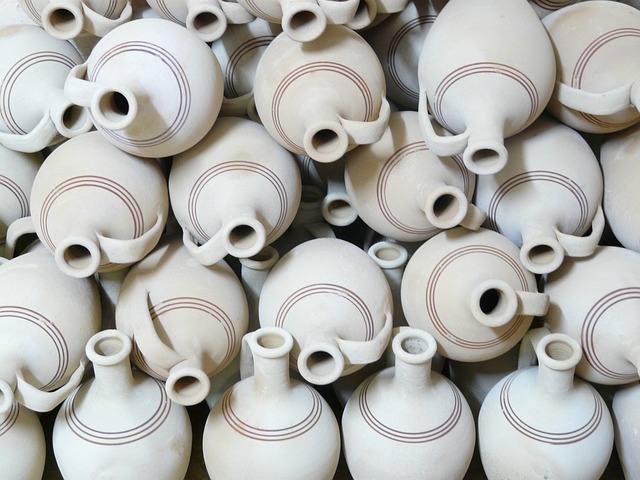
Green State vs. Post-Sintered Machining
| Aspect | Green-State Machining | Post-Sintered Machining |
| Ease of Cutting | Softer, less tool wear; allows carbide tools & standard CNC mills | Very hard; requires diamond grinding tools; slower & costlier |
| Dimensional Accuracy | Shrinkage and warpage occur later during sintering | Final dimensions achieved reliably with ±3–5 µm accuracy |
| Surface Finish | Rougher finish needing post-processing | Can reach <Ra0.2 µm directly |
| Tool Costs | Lower specialized tooling; tolerable insert wear | Higher cost for diamond tooling and longer operations |
| Lead Time & Cost | Needs sintering cycle; risk of part failure | Immediate machining from stock; ideal for prototype or low-volume runs |
| Flexibility | Great for custom shapes pre-sinter | Limited flexibility due to tool wear & brittle materials |
Choose the Right Ceramic – Made Easy
- For reliable, budget-friendly components like insulators and wear parts, Alumina is a top performer.
- In bio-implants or harsh chemical settings, Zirconia shines with strength and compatibility.
- For ultra-tough machining tools and high-speed bearings, count on Silicon Nitride.
- Need unbeatable hardness and heat resistance? Silicon Carbide delivers—best used in ground form.
From extreme hardness to high toughness and other properties, resilience, each ceramic material has its own profile and its challenges. NOBLE expertly navigates these trade-offs to deliver solutions that fit your performance goals, tooling setup, budget, and production volume.
Core Machining Techniques & Technologies
1. Standard Methods: Milling, Grinding & Drilling with Diamond/CBN Tooling
Diamond and CBN Tools:
Diamond tools—either natural or synthetic, often electroplated or in PCD form—offer high wear resistance, low friction, and exceptional surface quality, ideal for ceramic milling, drilling, and grinding.
Meanwhile, cubic boron nitride (CBN) tools, the second hardest after diamond, bring heat stability and grinding performance, especially useful when machining ferrous ceramics or high-chrome alloys.
Process Essentials:
- CNC Milling: It is usually done dry or with just a little lubricant. You’ll want to run fast but cut shallow to keep the ceramic from cracking.
- CNC Drilling: Drilling needs diamond-tipped bits, and you’ve got to go slow with peck drilling—steady in and out—so it doesn’t chip.
- CNC Grinding uses diamond wheels after sintering to get ultra-smooth finishes and tight tolerances.
2. Advanced Precision: Laser Cutting, Wafer Dicing & Ultrasonic Machining
Laser Machining & Wafer Dicing:
Laser machining offers pinpoint micro-cutting—like micron-scale slots in semiconductors—with no tool wear. But the trade-off? Heat zones that may need polishing or annealing to get pristine surfaces back.
Ultrasonic Machining (USM):
USM uses vibration and abrasive slurry—not heat—to create complex micro-features and crisp edges. With tolerances around ±5 µm and finishes near Ra 0.2 µm, it’s perfect for delicate work. Tool-like sonotrodes offer EDM-level drilling accuracy. Downsides? It’s slower and harder on the tooling.
3. Multi-Axis CAM Integration: From 3-Axis to 5-Axis Accuracy
- 3-Axis Machining: Ideal for straightforward parts—fast, reliable, and widely available. Perfect for simpler geometries, but limited when it comes to complex contours.
- 4 & 5-Axis CNC: These add rotation, so tools can tilt and reach awkward spots. That means fewer setups and cleaner results on complex parts like angled bores or deep pockets. With smart CAM software, they hit sub-micron precision and catch issues before they happen.
4. Subtractive vs. Non-traditional Methods
Electrical Discharge Machining (EDM):
Great for conductive ceramics like SiC or SiAlON—EDM uses tiny electric sparks to eat away at material without touching it. You can make super detailed shapes and tiny holes, accurate to about ±10 µm. The catch? It heats things, so you might need to polish or anneal the part afterward.
Electrochemical Machining (ECM):
ECM dissolves material electrochemically—no friction, no deformation—ideal for intricate profiles and smooth, stress-free surfaces. Perfect for delicate, high-precision parts, though it comes with trade-offs: slower throughput, complex control, and chemical handling.
Virtual Simulation & Hybrid Techniques:
Advanced CAM software brings machining into the digital age, letting you simulate paths, stress, and heat before making a single cut. Want even more performance? Hybrid techniques like laser-assisted EDM or ultrasonic-ECM combine technologies to slash cycle time and boost precision, all while reducing wear and error.
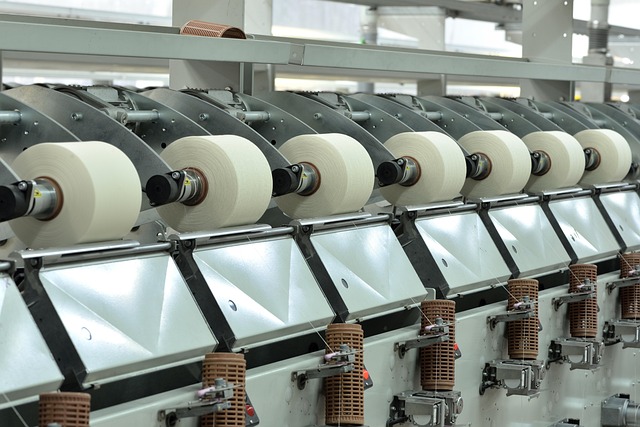
Advantages That Go Beyond the Obvious
Precision, Intricate Geometries & Batch Flexibility
Micron-Level Precision:
Ceramic CNC machines can regularly hit insanely tight tolerances—down to ±0.001 mm, and sometimes even tighter at ±0.0005 mm. That level of precision is a must when you’re working on stuff like chips, lenses, or aerospace components.
Complex, Intricate Features:
Thanks to multi-axis CNC, you can pull off shapes that molding could never touch—deep holes, super-thin walls, undercuts, and weird curves. It gives designers way more freedom to get creative with form and function.
Low-Volume & Prototype Agility:
Skip the expensive molds and go straight to the part. CNC machining brings unmatched speed and cost-efficiency to low-volume production and rapid prototyping—ideal for innovators, researchers, and niche applications.
Superior Thermal, Chemical & Electrical Performance
Thermal Stability:
Ceramics can handle crazy high temps—up to 1600 °C—and barely expand when things heat up. That’s why they’re a go-to for stuff like jet engines, heat shields, and anything dealing with serious heat.
Chemical Inertness:
Acids? Bases? Solvents? No problem. Machined ceramics resist it all, making them the go-to choice for chemical plants, medical-grade components, and harsh industrial settings.
Electrical Properties:
With high dielectric strength (15–20 kV/mm), ceramics like alumina and quartz deliver top-tier electrical insulation. Ideal for sensitive tech—semiconductors, RF systems, and high-voltage connections.
Eco-Friendly Benefits & Recyclability
Reduced Waste:
High-precision CNC dramatically cuts scrap rates—less material ends up in the bin, and sintering or reprocessing demands less energy.
Energy Efficiency:
Accurate machining minimizes rework and unnecessary kiln cycles, slashing energy use and delivering a lower carbon footprint for every component.
Sustainable Material Cycle:
While ceramics can’t be remelted, you can reclaim alumina and zirconia scrap by grinding it into filler or powder—a sustainable edge over plastic or composite waste. Pair this with small-batch CFD CNC runs, and you’re aligning with truly green manufacturing practices.
Challenges & Industry-Driven Solutions
Why Ceramics Demand Extra Care
- Inherent Brittleness: Ceramics don’t bend—they snap. Any shock or vibration can trigger cracks or breakage during machining, so careful handling is key to avoid scrap and downtime.
- Rapid Tool Wear: Because ceramics are so hard and abrasive, even diamond or CBN tools wear out fast and unevenly. You’ll need to replace or re-dress tools more often than you’d like.
- Slow Feed Rates: You’ve gotta feed really slow and use shallow cuts to avoid thermal damage and cracking, especially during finishing. That slows down cycle times and adds cost.
Practical Solutions: From Tools to Smart Monitoring
Diamond-Coated / CBN Tools
Coated Burrs and Inserts: Diamond-coated burrs and high-performance inserts bring out the best in hard ceramics—they combine maximum wear resistance with precision shaping for tight-tolerance features that standard tools just can’t handle.
Best Practices:
Pre-chamfer or use a ramp-in technique: easing in the tool prevents shocks and protects both tool and part, especially important in high-speed ceramic cutting.
Match tool geometry to operation: CNMG/DNMG-style inserts are ideal for finishing, giving sharp, clean edges; round inserts work best in roughing, distributing forces, and minimizing chipping.
Coolant Strategies & Thermal Management
- Hot Cutting is Key: Ceramics stay hard even when hot, so full-on coolant flooding isn’t usually the best move. Instead, go with a light air blast or use minimal high-temp oil–based coolant—it keeps things cool without shocking the material.
- Avoid Thermal Shock: If you need coolant to clear chips, introduce it gently and gradually. Sudden cold hits can crack brittle ceramic tools and parts.
Real-Time Monitoring & Predictive Maintenance
- Acoustic Emission (AE) Sensors: Mount AE sensors near diamond-coated burrs to catch early signs of wear—like grain pop-out—so you can swap tools before things go south and extend tool life.
- Process Control Software: Modern machines kick in AI-style feedback loops—monitoring force, vibration, and AE—to tweak feed and speed on the fly, cutting down failures and prolonging tool life.
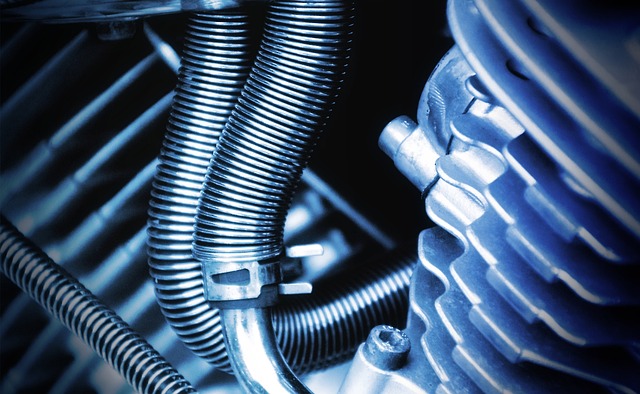
Industry Spotlights & Use Cases
Aerospace: Turbines, Nozzles & Heat Shields
Turbine Blades & Combustion Chambers: A SiC/SiC CMC is revolutionizing jet engines—featured in the GE9X, these materials form combustor liners, high-pressure turbine shrouds, and nozzles. Able to operate at ~1,500 °C with a third of he weight of metal and requiring far less cooling air, they significantly enhance thrust and efficiency.
Thermal Protection Systems: Ultra-high temperature CMCs—think carbon-fiber-reinforced ZrB₂ ceramics—are being tested for spacecraft heat shields and rocket nozzles. These can survive re-entry temperatures over 2,000 °C.
Medical & Dental: Biocompatible Implants & Surgical Instruments
Orthopedic & Dental Implants: Zirconia and alumina are precisely CNC-machined into hip and knee joint parts, as well as dental crowns, abutments, and bridges. These parts fit super snugly—with crown tolerances around ±20 µm—and they’re biocompatible, so they integrate well into the body without issues.
Surgical Blades & Instruments: Zirconia blades retain their edge longer, resist sterilization processes, and stay inert. Ideal for surgical scalpels, micro tools, and implants like spinal cages or screws. Shaped using multi-axis diamond tooling, they offer precision and durability where it counts.
Electronics & Telecom: Insulators, Substrates & Heat Sinks
Ceramic Substrates & Insulators: Materials like alumina, Macor, quartz, and aluminum nitride get machined into tough substrates for high-frequency circuits, vacuum interrupters, microwave parts, and chip carriers. Aluminum nitride stands out with heat conduction around 170–200 W/m·K and great electrical insulation—perfect in electronics where you need both heat dissipation and isolation.
Heat Sinks: Machined alumina and aluminum nitride heat sinks keep power electronics, RF modules, and solar inverters running cool and safe. AlN, with its unmatched thermal performance (~170–200 W/m·K), electrical isolation, and a thermal expansion that syncs with silicon, ensures reliable thermal control even under heavy cycling.
Automotive: Brake Parts, Spark Plugs & Wear Components
Brake Disks & Pads: In sports and supercars, carbon-ceramic disks made from carbon-fiber/SiC CMCs reign supreme: twice the thermal stability of iron (~1350 °C vs. ~700 °C), fade-free braking, less warping, less dust, and roughly half the weight.
Spark Plugs & Valves: High-quality spark plugs use CNC-machined sintered alumina insulators to deliver exact sealing, top-notch dielectric strength, and heat resistance (up to 650 °C). This ensures sharp ignition and long-lasting reliability.
Industrial & Artisan: Molds, Decoration, Prototyping
Precision Molds & Tooling: Machinable ceramics like Macor are secret weapons for rapid tooling and mold prototyping—they machine like a metal, don’t require firing afterward, and maintain tight tolerances (±0.013 mm) with minimal cost and setup delay.
Decorative & Artistic Ceramics: Craft bespoke tiles, sculptures, or decorative components with precision CNC—perfect for small artisan runs that feature intricate patterns and undercuts that just aren’t possible with manual sculpting or slip casting methods.
Industrial Components: From quartz wear plates to Mycalex valve bodies and nozzles, machined ceramics deliver corrosion resistance and wear durability. These parts are reliable in harsh conditions—ideal for chemical plants, food processing, or heavy industries.
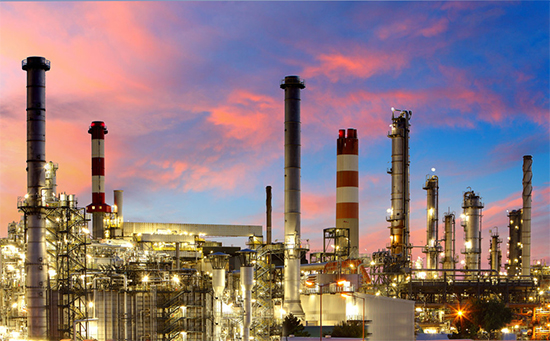
Design for Manufacturability: Tips & Pitfalls
Favor Rounded Internal Radii, Avoid Thin Walls
- Rounded internal corners: Sharp inside corners might look sleek, but they’re a nightmare for tools. Rounded internal corners (at least ½ the tool diameter or ⅓ cavity depth) help reduce tool stress, boost accuracy, and extend cutter life—smart design equals smoother machining!
- Thin walls: Want a clean cut and a durable part? Skip ultra-thin walls. Anything under 0.8–1 mm risks cracking or distortion. With ceramics, going a bit thicker ensures both machining success and long-term strength.
Leave Machining Stock for Sintered Parts
Ceramics shrink a lot during sintering—anywhere from 15% to 30%, and not always evenly. So when you’re designing a part, always leave extra material—usually about 0.5 to 1 mm on every surface. That way, once the part’s sintered, you’ve still got enough stock to machine it precisely and hit those tight tolerances. It also helps fix any weird warping or distortion that can sneak in during the process.
Use CAM Simulation & Toolpath Optimization
Virtual Machining / Digital Twins: You know those fancy CAM tools like VERICUT or NCSIMUL? They mirror your machine axes, deflection, collision zones, and all, so you cut setup times by roughly 65% and dodge nasty tool crashes..
Optimize toolpaths: With OptiPath guiding the CAM toolpath, your cutter keeps a steady chip load and skips all those pointless retracts and zigzags, meaning your tools last longer and the part finish looks way smoother.
Multi-axis awareness: With multi-axis aware CAM, the software basically ‘knows’ how to swing the rotary axes, dodge unreachable spots, and stop crashes—handy when you’re working on delicate ceramic pieces.
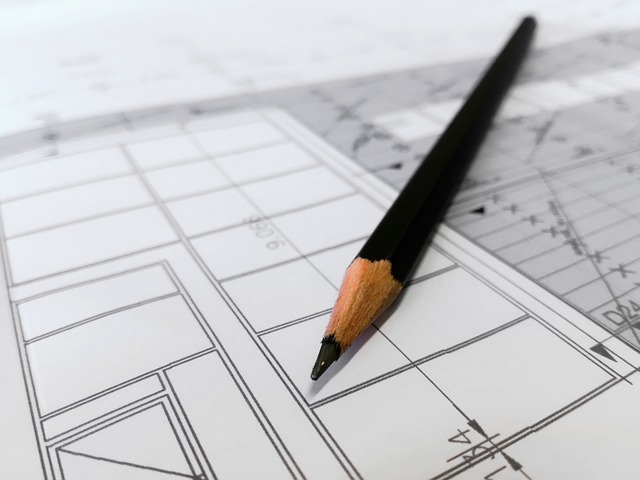
On NOBLE, experienced engineers emphasize:
“But I learned a lot by using CAM generating toolpaths and watching the simulations … CAM doesn’t teach you how to make the part, it will make the part however you tell it to.”
And more importantly:
“Be real careful with any thin walls, sharp corners… it will chip anywhere it can … run it dry to keep the dust out of the coolant … keep a vacuum pointing at the tool.”
Environmental & Economic
Life Cycle Benefits: Durability, Inertness & Reusability
Exceptional Longevity
Believe it or not, alumina and zirconia parts cut on CNC machines can just keep ticking along for decades—even in nasty environments—way outliving their metal or plastic counterparts.
Chemical Inertness
These ceramics don’t leach anything harmful, ever. That means they just sit in a landfill or float around in water without ever breaking down or spilling nasties.
Circular & Recyclable Materials
When they’re done, you can just crush them up and toss them into concrete, make roadbase, or even grind them down for powder. Plus, scraps from machining get reused as filler, so there’s barely any waste.
Economic Trade-Offs: Tooling Costs vs. Longevity & Scale
High Tooling Cost, Low Replacement Frequency
Diamond and CBN bits cost more upfront, yet their lifespan—up to 20× longer than carbide—cuts down on changeovers and waste.
Enhanced Process Precision Lowers Rework
With accurate machining, CAM simulation, and constant monitoring, you avoid scrapped parts and rework, saving material, labor, and boosting both your bottom line and ecological impact
Scalability Maximizes ROI
Sure, ceramic tools cost more up front, but once you’re producing hundreds or thousands, the cost per part dives, and small-batch prototyping becomes surprisingly affordable.
Lifecycle Analysis & Sustainability Metrics
Energy & Emissions Savings
Sure, making ceramics uses a lot of energy upfront, especially during sintering—but thanks to their toughness and low upkeep, they can make up nearly 60% of that over time.
Lower Raw Material Footprint
Incorporating recycled ceramics, such as powdered waste, reduces the use of virgin alumina or zirconia by up to 30%, thereby helping to decrease resource use and overall supply chain impact.
Circular Economy Engagement
Reusing ceramic waste in applications such as roads or fillers keeps it out of landfills, conserves resources, and even reduces carbon emissions—everyone benefits.

Technological Innovations & Future
Multi-Axis Automation & Real-Time Monitoring Integration
Today’s ceramic machining lines are packed with smart 5-axis CNC machines that use sensors to monitor everything from vibrations to temperature. These machines send data to analytics systems that tweak the cutting process in real-time, preventing tool wear and improving quality. Add to that automated tool changers, robots, and “lights-out” operations, and you get a super-efficient production setup.
AI/ML-Driven Laser & Ultrasonic Precision Machining
Machine learning is making waves in new machining methods like laser and ultrasonic vibration machining. It works by crunching huge amounts of sensor data—like force, acoustic emissions, and laser reflectivity—to fine-tune settings like power, frequency, and feed rate on the fly, improving both accuracy and surface quality while cutting down the risk of damage.
Take laser machining for embedding microchannels in green-state ceramics. By using machine learning to fine-tune settings, it helps keep those channels intact through sintering, allowing for super-thin 60 µm walls and precise channel structure.
Emerging Trends: Nanoceramics, Tomographic Additive Fabrication & Greener Cycles
- Nanoceramics: Nanoceramics are tiny, ultra-dense materials with super-small grains that massively improve toughness, wear resistance, and heat tolerance. This makes them perfect for cutting-edge fields like microfluidics, aerospace optics, and even medical micro parts.
- CerAM‑AM (Ceramic Additive Manufacturing): CerAM-AM is pushing the boundaries of ceramic production, with techniques like CerAM-VPP and MMJ joining forces with cutting-edge tomographic methods. The result? Fully dense, complex ceramic parts made with minimal post-processing.
- Sustainable Manufacturing Cycles: Additive processing is way more energy-efficient and creates less scrap compared to old-school powder compaction. Plus, by re-machining green bodies and recycling waste, we can recover alumina and zirconia locally, helping push the circular economy forward.

Conclusion
Ceramic CNC machining is where cutting-edge precision, exceptional materials performance, and manufacturing flexibility come together. It takes brittle, high-performance ceramics and turns them into critical assets for industries that demand reliability, longevity, and small-batch flexibility. With advancements in tooling, the rise of AI and automation, and a growing focus on sustainability, CNC ceramics is primed to offer even more value, combining complexity with.
NOBLE – From Design to Mass Production, Always by Your Side!
Providing custom Ceramic CNC machining solutions at competitive prices, we choose from over 100 materials and 60+ surface finishes to ensure you receive high-precision, structurally complex, and performance-stable parts. Try our precision Ceramic CNC machining services and become our next satisfied customer.
Economical Price & Perfect Quality
We can offer you the lowest price for the same quality. Strictly control the machining and finish treatment quality, and what you will get is what you designed.
Experienced & Capabilities
More than 10 years of professional machining and rapid prototyping experience, providing you with the most professional and effective advice. From prototyping to mass production, NOBLE combines high-quality materials with state-of-the-art technologies to bring products to life.
Fast Lead Time
Not only do we have a digital CNC machining services platform that provides a faster ordering process, but we also own domestic workshops and state-of-the-art machinery to accelerate the production of your prototypes or parts.
24/7 Engineering Support
No matter where you are, you can get our 24/7 engineering support all year round. Our experienced engineer can provide you with the most appropriate solution for your part design, material selection, surface finishing options, and even lead time.
